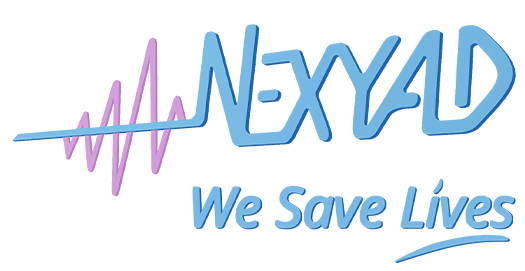“THEORY OF WATER FLUSH” AND IMPACT ON THE PREVENTION OF ACCIDENTS FOR AUTONOMOUS VEHICLES
FOR AUTONOMOUS VEHICLES
by NEXYAD
INTRODUCTION
Let’s suppose that the flush does not exist in our toilets, and then let’s suppose that engineers able to create complex systems or even “systems of systems” are consulted to invent it, and that they apply exactly the same method than they do in the field of ADAS and Autonomous Vehicles.

METHOD OF SCENARIOS
We propose to apply the method of scenarios, which consists in crossing all the factors that can modify the situation, then in each case of the complete combination, propose a solution. For this, it is necessary to note the number of possible shapes for the tank, the possible volumes, all the possible locations for the water supply entry, the possible diameters of the inlet pipe, the flow rates and possible pressures of water, the possible residual water levels before filling. We can generate the combinatorial of these factors, which allows us to generate all the possible scenarios of the “flush” problem. In each case, it is possible to give a solution, namely, the duration of filling of the tank (opening and closing of the water tap).
This approach is fully compatible with deep learning, which will also interpolate between two reference cases (quality of interpolation/generalization to be controlled, of course) if characteristics had to drift over time. Of course, the tank must integrate a system of sensors to evaluate the configuration (diameter of pipe, pressure of water, position pipe, capacity of the tank, etc …). We can use a camera, lasers, ultrasounds, etc. So that this recognition of situation is as accurate as possible. For such an approach, automation/control engineers talk about open-loop (feed forward) control because the data flow is as follows:

COST AND ROBUSTNESS OF THE SCENARIOS METHOD
It is easy to understand that the flush thus designed will be perfectly functional (there is no reason for it does not work), but for a high cost due to the sensors to integrate. Similarly, the robustness of the system to a measurement error or to a bad situation recognition is not guaranteed : we can very good to fill too much or not enough. The accuracy of the configuration case recognition is very important.
SOLUTION OF WATER FLUSH IN THE REAL WORLD
If you have the curiosity to disassemble your flush, you will notice that it is much simpler than the system described above: A float indicates when the water supply valve should be closed. The figure is as follows:

Automation engineers call this a closed loop control (servo control). The feed forward “open” control is reduced to “open the tap thoroughly without worrying about the flow of water, the volume of the tank, and turn off the tap as soon as the float asks for it “. Note that this method works regardless of the configuration of the flush : we do not even need to know the volume of the tank that can be modified (for example: by filling half of the tank with glass beads) without affecting the operation of the flush. It is a robust and cheap system.
TRANSCRIPT OF THESE REMARKS IN THE FIELD OF ADAS AND AUTONOMOUS VEHICLES:
SERVO CONTROL IN DECISION
The information processing chain of the autonomous vehicle follows the general feed forward form :
NEXYAD has developed the SafetyNex system which dynamically estimates in real time the risk that the driver (human or artificial) takes. However, the autonomous vehicle may be functionally specified as follows:

“transport someone from point A to point B as quickly as possible, and safely.”
The “quickly” aspect is the historical business of the automobile. The “safely” notion integrates intrinsic safety of the system (its dependability: it should not explode, sensors or power supply may not be disabled, etc.), and since it is a vehicle, its ability to move with a good road safety, that is to say by “not taking too much risk in driving”. Since SafetyNex estimates this driving risk dynamically and in real time, it can be said that SafetyNex is a dynamic indicator of “SOTIF” (Safety Of The Intended Function). SafetyNex acts as a “driving risk float” : when the risk arrives at the maximum accepted level (like the float of the flush) we stop the action that raised the risk (example: we stop accelerating or we slow down). Thus, the response of an autonomous driving system is made adaptive (at the decision level) : even if the feed forward open loop is not perfect, it can correct itself to take into account, among other things, the instruction and the measure of driving risk. This system is completely independent of the automatic driving system in terms of information processing, so it represents redundancy of processing.
SafetyNex uses to estimate risk :
. risk due to inadequacy of driving behaviour to the difficulties of the infrastructure : navigation map, GPS, accelerometers
. risk due to inadequacy of driving behaviour to the presence of other road users (cars, pedestrians, …) : data extracted from the sensors (camera, lidar, radar, etc) such as “time to collision”, “inter distance (in seconds)”, number of vulnerables around, etc.
. risk due to inadequacy of driving behaviour to weather conditions: in particular to atmospheric visibility (fog, rain, snow, sand, penumbra). Knowing that when visibility is low, vehicle must pay more attention (and slow down) even if this autonomous vehicle is not impacted by the decrease in visibility (if it only uses a lidar for example) because the avoidance of an accident is done at the same time by the two protagonists : if one of them (pedestrian, human driver), does not see the autonomous vehicle, then it finds itself only to be able to avoid the accident, which doubles the probabilities of a potential accident.
. other
The use of SafetyNex allows to make adaptive an artificial intelligence of autonomous driving, on the following diagram :

If you have a lean computer, then you only apply one loop between t and (t+1) as it is shown on the figure. If you have a powerful computer, you can then even simulate a big number of decisions and take the less risky one (like automaticians do with predictive control systems). Of course, SafetyNex is only ONE way to close the loop (on a crucial notion : driving risk). This figure may be extanded to other variables of contol that make sense for an autonomous vehicle. More complex adaptation rules may switch from a decision to another if risk simulation shows that finally it is less risky (ex : slow down or turn wheel ?).
CONCLUSION
SafetyNex uses the map in addition to sensors (same sensors as the driving system or parallel tracks) and does not need to accurately identify the situation but instead to estimate a risk (this is a different task). SafetyNex is a knowledge-based AI system (knowledge extracted from human experts in road safety, from 19 countries – Europe Japan USA – who validated the system over 50 million km. Total research program duration : 15 years). This technology is still being improved, of course, but it can already be integrated into autonomous vehicles and avoid a large number of accidents by its ability to make the system adaptive to unknown situations. In particular, in the case of autonomous urban vehicles (autonomous shuttles, robot taxis), the adaptation of driving behaviour to complexity of infrastructure is made possible by SafetyNex, which decodes this complexity by reading the navigation map in front of the vehicle. SafetyNex makes the autonomous vehicle anticipate more by following “rules of safety” : with SafetyNex emergency situations (that still will need emergency braking and other emergency actions) become much more rare. Autonomous vehicle acts like an experienced cautious driver. Note : if you modulate Maximum Accepted Risk, then you modulate aggressiveness of the autonomous vehicle. This might make sense not to let the autonomous vehicle trapped in complex human driving situations (where the autonomous vehicle would stopped indefinitly).




